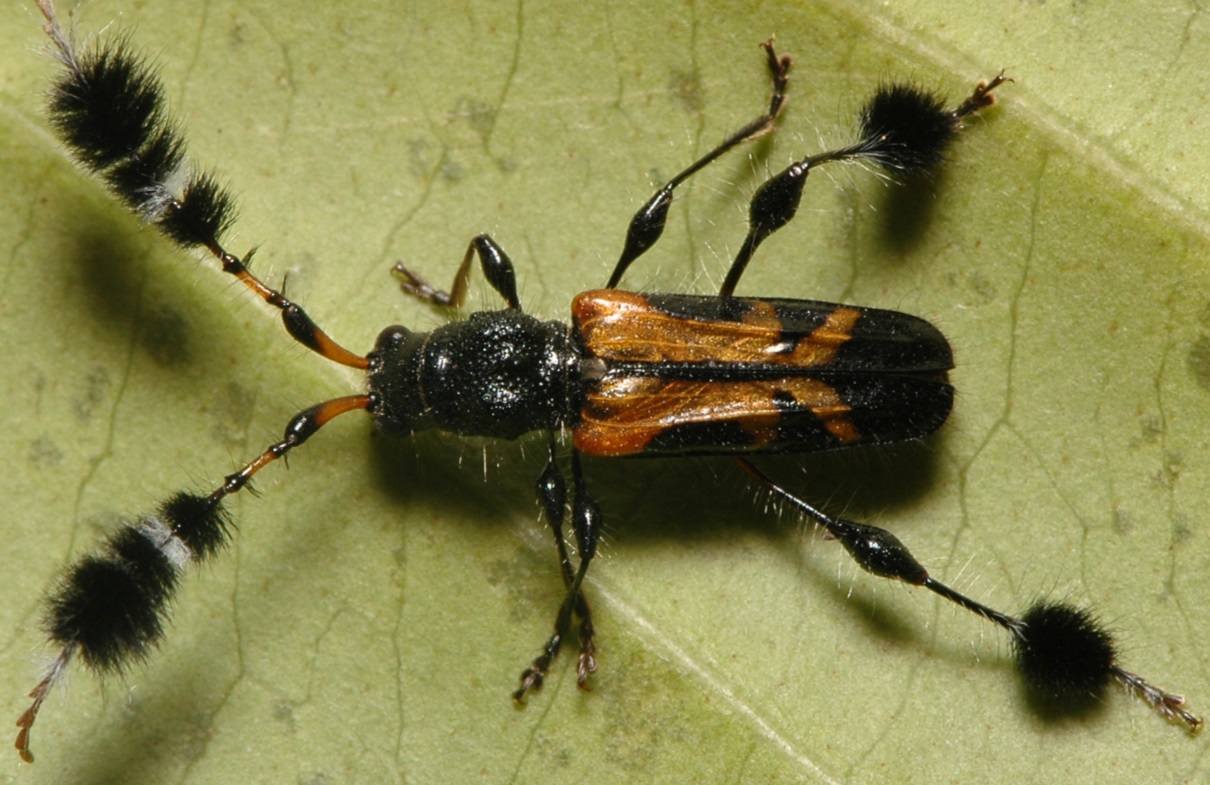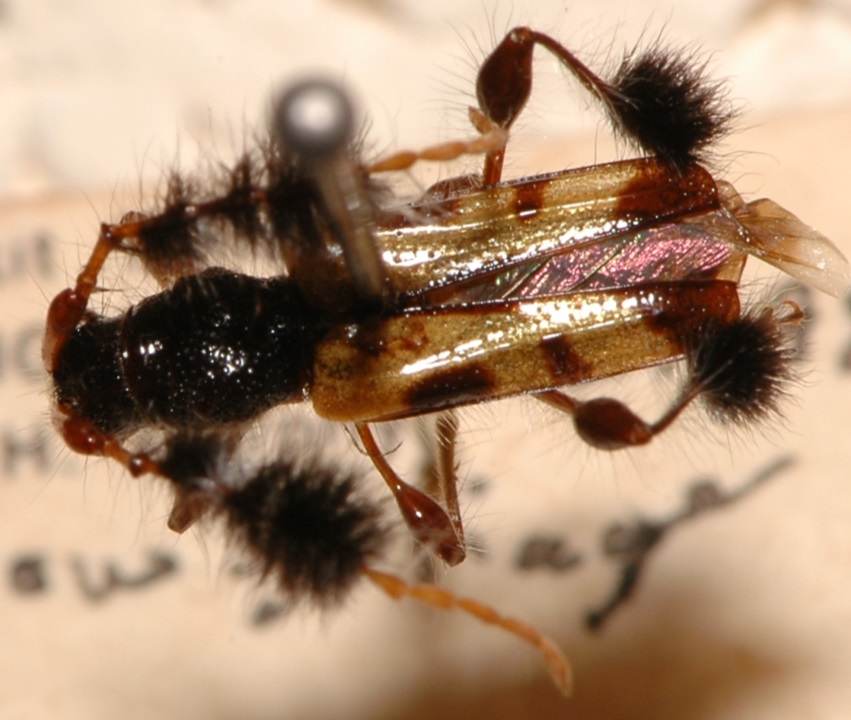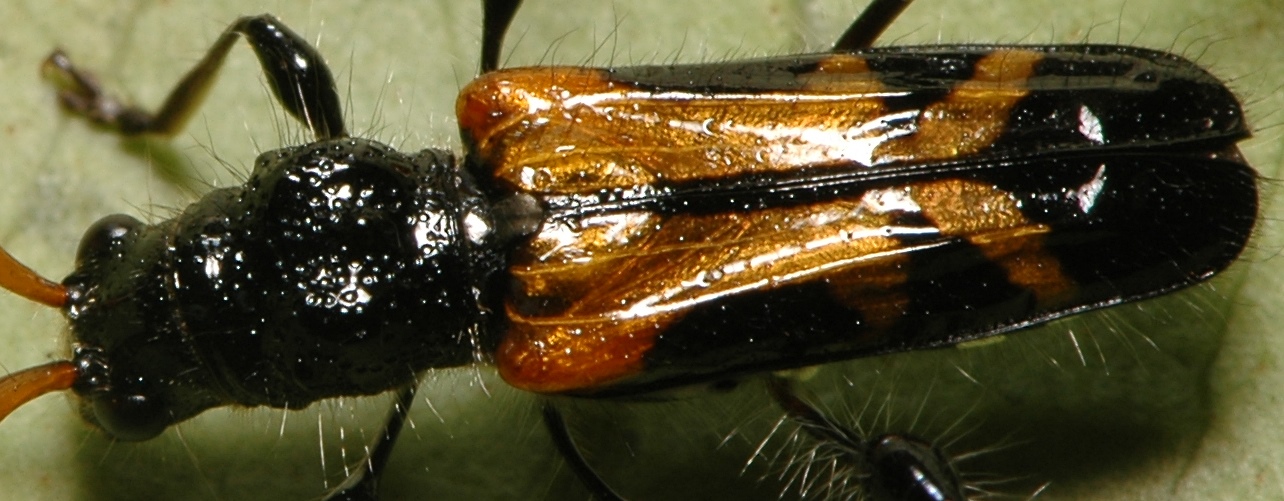| Author |
 Topic Topic  |
|
|
loongfah
Member Purpuricenus
 
Singapore
374 Posts |
 Posted - 15/06/2016 : 17:39:27 Posted - 15/06/2016 : 17:39:27



|
Two Singapore specimens which I believe might be the same species.

269.61 KB
The second specimen is an old specimen collected more than 30 years ago.

139.32 KB |
Edited by - loongfah on 16/06/2016 14:58:19 |
|
|
Xavier
Scientific Collaborator
    
France
12219 Posts |
 Posted - 15/06/2016 : 18:00:33 Posted - 15/06/2016 : 18:00:33



|
It is a Phyodexia sp. . Only 4 species.
Holotype picture of Phyodexia carinata Pic, 1902 is available here and a picture of Phyodexia concinna Pascoe, 1871 is available here
I have no picture of the 2 others species, but I think your species could be P. carinata ,... because of white hairs on antenna. |
Edited by - Xavier on 15/06/2016 18:24:47 |
 |
|
|
Xavier
Scientific Collaborator
    
France
12219 Posts |
 Posted - 15/06/2016 : 18:57:55 Posted - 15/06/2016 : 18:57:55



|
To complete :
Phyodexia luteonotata n. sp. Parum elongatus, nitidus, longe et sparse pubescens, niger, antennis ad basin, femoribus et tibiis anticis pro parte rufis, elytris antice late luteo lineatis, linea antice et postice transverse prolongata, et ante apicem oblique luteo fasciatis; antennis sat brevibus, articulis mediis multi et dense nigro fasciculatis; thorace parum elongato, medio subgloboso,
antice et postice paulo strangulato, fortiter parum dense punctato; elytris thorace paulo latioribus, sat brevibus, in disco bicostatis, diverse pro parte sparse punctatis; pedibus longe sparseque pubescentibus.
Long. 12 mill. Chapa. - Diffère de carinata Pic, par les élytres un peu plus étroits, à ponctuation plus nette, le prothorax subglobuleux sur son milieu, à ponctuation moins rapprochée, les épaules et la base des élytres noirs.
Original description of Phyodexia luteonotata Pic, 1927 |
Edited by - Xavier on 15/06/2016 19:03:20 |
 |
|
|
loongfah
Member Purpuricenus
 
Singapore
374 Posts |
 Posted - 16/06/2016 : 14:57:42 Posted - 16/06/2016 : 14:57:42



|
Dear Xavier
Thanks a lot! I checked up on the original description of Phyodexia atronitida Hayashi 1977 (from Malaysia): it has no discal carinae on elytra. So this can be ruled out. Hayashi further commented that "P.carinata Pic should belong to Mythodes Thomson, by having thick black tufts of long hairs on hind tibiae, and the brief original description for P.carinata seems to show the species is almost identical with M. plumosa Thomson" (which is described from Malaysia)
Having further checked up on Mythodes plumosa Thomson, 1864, I think Mythodes plumosa is most likely my species (description fits, and considering locality  ). I am not sure if Mythodes plumosa is indeed the senior synonym of P.carinata. While they are quite alike, the elytral punctuation of P.carinata in the HT is much denser (cf to the elytra of my specimen below) ). I am not sure if Mythodes plumosa is indeed the senior synonym of P.carinata. While they are quite alike, the elytral punctuation of P.carinata in the HT is much denser (cf to the elytra of my specimen below)

295.84 KB |
 |
|
|
Xavier
Scientific Collaborator
    
France
12219 Posts |
 Posted - 16/06/2016 : 17:48:15 Posted - 16/06/2016 : 17:48:15



|
| Sorry, but I can not help you more; I have no specimens of this tribe in collection, only the holotype picture posted... |
 |
|
|
horshehden
Member Purpuricenus
 
Czech Republic
424 Posts |
 Posted - 19/06/2016 : 12:31:49 Posted - 19/06/2016 : 12:31:49



|
Your specimen is M. plumosa. Sometimes it can be collected in large number at low to mid elevations of peninsular Malaysia.
P. carinata is closely related, but independent species of Mythodes in my opinion. P. luteonotata is another species with very similar design of elytra and might belong to Mythodes as well. |
 |
|
|
Xavier
Scientific Collaborator
    
France
12219 Posts |
 Posted - 19/06/2016 : 13:51:44 Posted - 19/06/2016 : 13:51:44



|
quote:
Originally posted by horshehden
Your specimen is M. plumosa.
Have you seen the holotype specimen ? |
 |
|
| |
 Topic Topic  |
|


